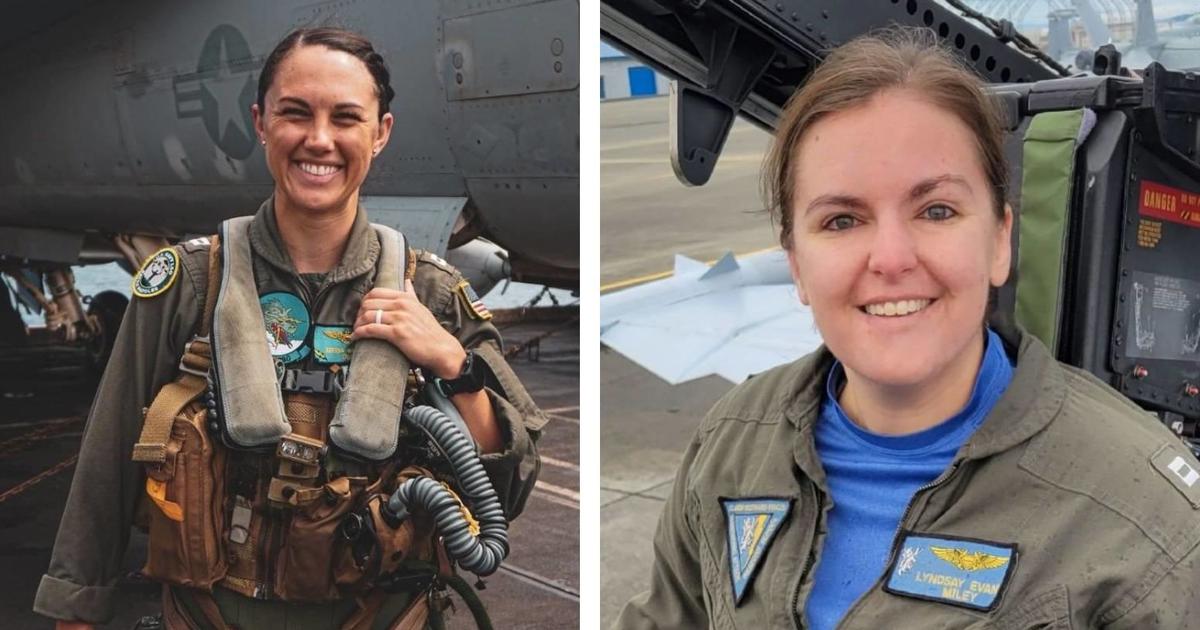The tragic crash of a U.S. Navy EA-18G Growler near Mount Rainier, Washington, claimed the lives of two accomplished female aviators, Lt. Cmdr. Lyndsay P. Evans and Lt. Serena N. Wileman. Both 31 years old and hailing from California, their loss has deeply affected the Navy community and the nation. The multi-day search operation, hampered by challenging terrain and weather conditions near the towering volcano, ultimately recovered the remains of both crew members, allowing for their identification and the solemn process of notifying their families. This incident underscores the inherent risks associated with military flight operations and highlights the dedication and sacrifice of service members. The investigation into the cause of the crash is underway, and the Navy is focused on supporting the grieving families and honoring the memory of these brave aviators.
The Fallen Aviators: Lt. Cmdr. Lyndsay P. Evans and Lt. Serena N. Wileman
Honoring Their Service and Sacrifice
Lt. Cmdr. Lyndsay P. Evans and Lt. Serena N. Wileman were both highly skilled naval officers, dedicating their lives to serving their country. Their roles as a naval flight officer and naval aviator, respectively, within Electronic Attack Squadron 130, showcased their expertise and commitment. The squadron, boasting the title of the Navy’s oldest electronic warfare squadron, operates the EA-18G Growler, a sophisticated aircraft crucial for electronic warfare capabilities. Their service and ultimate sacrifice highlight the often unseen dangers faced by military personnel during training exercises. The Navy’s statement emphasizes the profound impact their loss has on the squadron and the wider naval community, and supports prioritizing the needs of the fallen aviators’ families during this difficult time.
The Impact on the Navy and Electronic Attack Squadron 130
The loss of Lt. Cmdr. Evans and Lt. Wileman deeply impacts the Navy and specifically Electronic Attack Squadron 130 (VAQ-130), also known as the “Zappers.” The squadron’s website proudly details the crucial role the EA-18G Growler plays in modern warfare, describing its advanced capabilities in countering threats. The deaths highlight not only the risks associated with operating this complex aircraft but also the personal cost borne by those who serve. This tragedy underscores the inherent dangers within their profession, and the immense contribution of every member, irrespective of rank, to national defense. The Navy’s response and expressions of sorrow and support emphasize the tight-knit community and the immense respect held for these fallen aviators.
The Crash and Subsequent Search and Recovery
The Challenging Terrain and Weather Conditions
The crash site, located near Mount Rainier, presented significant challenges for the search and recovery operation. Mount Rainier, a towering active volcano with snowfields and glaciers, offers notoriously difficult terrain and unpredictable weather patterns, especially during the year’s colder months. Search crews battled these adverse conditions for multiple days, highlighting the immense dedication and skill of the rescue personnel involved. Their unwavering commitment resulted in the successful recovery of both crew members’ remains. The complexities of the mountainous environment and the inherent difficulty of accessing the wreckage emphasizes the remarkable achievement in bringing this operation to a conclusion.
The EA-18G Growler Aircraft and Its Role
The crashed aircraft, an EA-18G Growler, is a sophisticated electronic warfare aircraft designed to counter threats through its advanced sensor and weapon systems. This advanced technology, while instrumental to modern naval operations, also carries complexities, making it vital for thorough pilot training and strict safety protocols. The EA-18G’s role in national security underscores the necessity of continuous improvements in safety and risk mitigation measures within military flight operations. Investigations into the causes of the crash are likely to focus heavily on this aircraft’s advanced systems, potential equipment malfunctions, and weather considerations. The inherent risks associated with this complex equipment emphasize the necessity of constant training, improved design, and ongoing rigorous inspection protocols.
Ongoing Investigation and Lessons Learned
Determining the Cause of the Crash
The investigation into the cause of the crash is ongoing. The Navy is committed to a thorough examination of all factors, aiming to identify any potential mechanical failures, pilot error, or environmental conditions which may have contributed to the incident. This investigation is critical not only to understand the immediate cause of this tragic loss but also to inform broader safety improvements within military flight training and operations. Any lessons learned will need to carefully balance improvements in safety protocols and technological advancements with the ongoing necessity of carrying out dangerous but vital military duties.
The Importance of Safety in Military Aviation
This tragic incident serves as a somber reminder of the risks inherent in military aviation. Even with the rigorous training and advanced technology used, accidents can and do happen. The Navy’s dedication to safety in all operations is underscored by the immediate response to this incident and their unwavering commitment to a full and complete investigation. The transparency within their investigations, and clear communication about the recovery effort shows their commitment to lessons learned from this tragic event and prevention of future mishaps. Focus is expected to involve a full technical assessment of the aircraft itself, pilot competency, and operational standards, with the ultimate aim of better protecting future aviators.
Take Away Points:
- The tragic loss of Lt. Cmdr. Lyndsay P. Evans and Lt. Serena N. Wileman highlights the risks faced by military aviators.
- The challenging search and recovery operation in the rugged terrain near Mount Rainier emphasizes the dedication of rescue personnel.
- The investigation into the cause of the crash will be critical for improving aviation safety within the Navy.
- The EA-18G Growler’s role in electronic warfare underscores the importance of this aircraft’s capabilities, and the training to safely operate it.
- The Navy’s commitment to supporting the families of the fallen aviators and ensuring a thorough investigation demonstrate its values.




